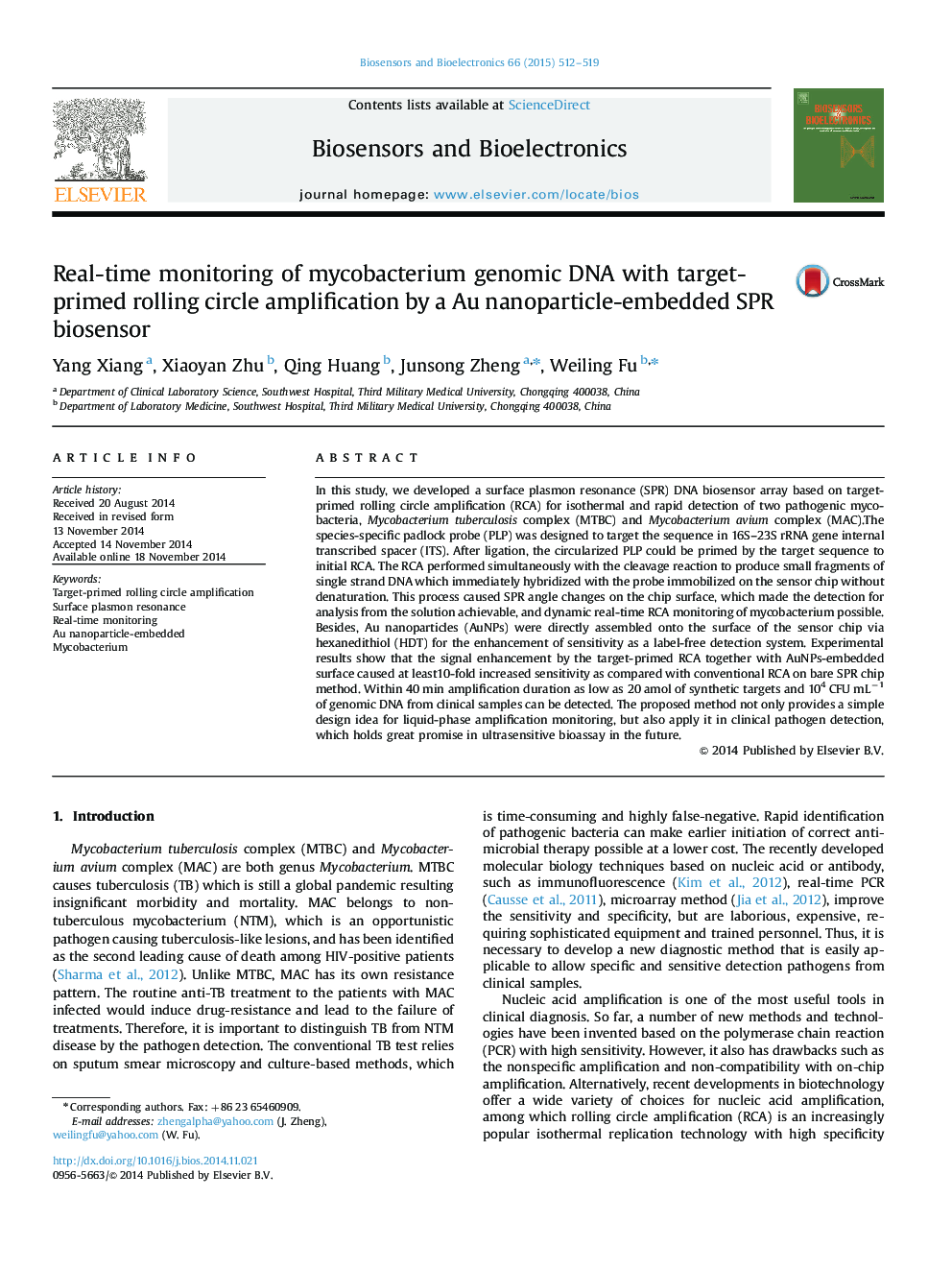| Article ID | Journal | Published Year | Pages | File Type |
|---|---|---|---|---|
| 7232827 | Biosensors and Bioelectronics | 2015 | 8 Pages |
Abstract
In this study, we developed a surface plasmon resonance (SPR) DNA biosensor array based on target-primed rolling circle amplification (RCA) for isothermal and rapid detection of two pathogenic mycobacteria, Mycobacterium tuberculosis complex (MTBC) and Mycobacterium avium complex (MAC).The species-specific padlock probe (PLP) was designed to target the sequence in 16S-23S rRNA gene internal transcribed spacer (ITS). After ligation, the circularized PLP could be primed by the target sequence to initial RCA. The RCA performed simultaneously with the cleavage reaction to produce small fragments of single strand DNA which immediately hybridized with the probe immobilized on the sensor chip without denaturation. This process caused SPR angle changes on the chip surface, which made the detection for analysis from the solution achievable, and dynamic real-time RCA monitoring of mycobacterium possible. Besides, Au nanoparticles (AuNPs) were directly assembled onto the surface of the sensor chip via hexanedithiol (HDT) for the enhancement of sensitivity as a label-free detection system. Experimental results show that the signal enhancement by the target-primed RCA together with AuNPs-embedded surface caused at least10-fold increased sensitivity as compared with conventional RCA on bare SPR chip method. Within 40Â min amplification duration as low as 20Â amol of synthetic targets and 104Â CFUÂ mLâ1 of genomic DNA from clinical samples can be detected. The proposed method not only provides a simple design idea for liquid-phase amplification monitoring, but also apply it in clinical pathogen detection, which holds great promise in ultrasensitive bioassay in the future.
Related Topics
Physical Sciences and Engineering
Chemistry
Analytical Chemistry
Authors
Yang Xiang, Xiaoyan Zhu, Qing Huang, Junsong Zheng, Weiling Fu,
